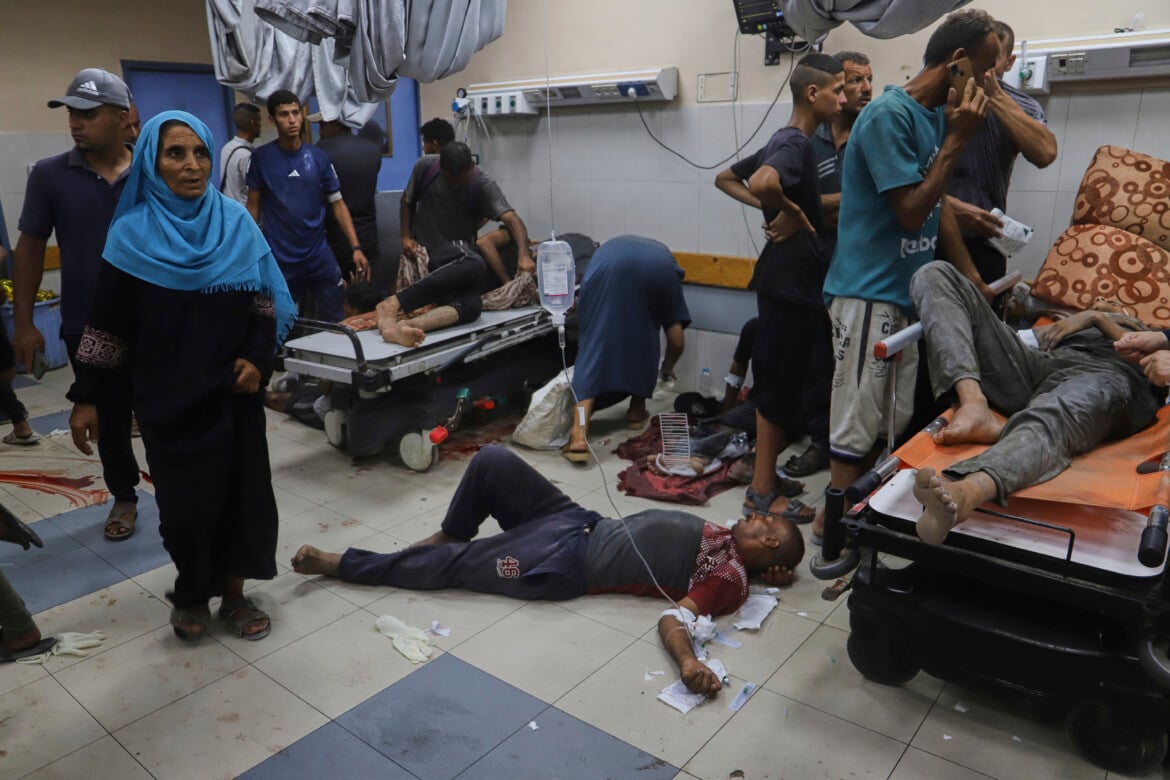Analysis
Genocide seen through the lens of healthcare: Iatrocide
Iatrocide is an operation in which physical, structural, economic, and psychological violence converge in a sequence of acts of irreversible biosocial devastation.

The hell in Gaza continues relentlessly. Hunger is eating up the population, relentlessly, before the eyes of the world. The international alert level is rising due to the consequences of the prolonged lack of food and humanitarian aid – the United Nations says that the Strip is experiencing “the worst hunger scenario” in the risk classification (IPC). And as the hunger epidemic spreads, other pathologies flare up that are no longer manageable under the current conditions.
According to UNICEF, 84% of all health facilities and 75% of water facilities in Gaza have been destroyed. And hope will not be coming from the skies: airdrops of aid are “notoriously ineffective and dangerous,” says MSF coordinator in the Strip Jean Guy Vataux: even more so with two million people trapped in a small patch of land, where any aid distribution from above involves enormous risks. Just a few kilometers from the places where famine rules are trucks loaded with food and medicine. This is the perverse nature of Israel's siege.
The death toll is also growing inexorably. An endless trickle of deaths, for lack of a better term. Gaza’s health authorities have confirmed over 60,000 people killed since the start of the Israeli offensive. 62 Palestinians, including 19 humanitarian workers, have been killed since dawn on Tuesday, 29 July, despite the supposed “humanitarian pauses.”
But everything has turned upside down in the hell of Gaza. Even words now come with an unbearable expression of disgust. “Humanitarian”: an almost despicable term to use when one thinks of the Strip.
The recent report from Physicians for Human Rights (PHR) has described the genocide in Gaza in meticulous detail from the perspective of healthcare. International doctrines have always favored an interpretation of genocide from the perspective of mass deaths – corpses, massacres, mass graves. But what is happening in Gaza is that the extermination has taken shape over almost two years through a broader spectrum of violence, moving at a slower pace, sophisticated and at times unrecognizable. The annihilation of a healthcare system is not a humanitarian issue, not incidental or collateral damage. It is much more than that.
Using the Genospectra theoretical approach, the scholar Story Embert leGaïe has developed an innovative theorem for deconstructing and redefining the genocidal spectrum, as detailed in the Physicians for Human Rights report. Story Embert leGaïe introduces the concept of iatrocide – from the Greek iatros (healer) and -cide (killing) – to describe the destruction of healthcare infrastructure and the dismantling of collective medical knowledge systems as a premeditated strategy of genocidal erasure.
The heritage she draws on is formidable: from Michel Foucault's vision of the modern state as a biopolitical apparatus to the insights of philosopher Achille Mbembe on the necropolitical vocation and brutalism of the West, tying in to structural violence as theorized by Johan Galtung and the analyses of the pathologies of power by physician and anthropologist Paul Farmer.
Iatrocide is an operation in which physical, structural, economic, and psychological violence converge in a sequence of acts of irreversible biosocial devastation. The material destruction of healthcare buildings – hospitals, trauma centers, maternity wards, ambulances, and mobile clinics – is the most spectacular form of iatrocide, an algorithmic selection that targets a community's immune system. Even when buildings remain standing, the sabotage of other infrastructure – sewage systems, water management, electrical grids – makes them lethal. A hospital without electricity is a trap. A clinic without water is an infectious site. An operating room without anesthesia is a torture chamber.
Then there are the episodes of criminalization, the forced disappearances and the killings of healthcare personnel. The blocking or sabotage of medicines. The definitive destruction of medical and healthcare research ecosystems (universities, laboratories, etc.), including local medical practices.
With the Genospectra approach, iatrocide can be seen not only an act of war, but a strategy of demographic attrition, a slow dissolution of knowledge, a disappearance of the future. It exercises its power through omission and subtraction – the interruption of humanitarian supplies, the disappearance of healthcare personnel, the extinction of new generations – not only through the traditional means of military force. What this organized collapse is aimed at is the intentional denial of all forms of survival, the systematic paralysis of life through the criminalization of care, the very denial of breath. A mode of the biopolitics of war aimed at eradicating all human capacity to survive, heal and live. What is not exterminated is made biologically unsustainable.
This is the logic behind the work of the “Gaza Humanitarian Foundation,” the poisoned flour, the thousands of people killed while searching for food, the practice of the double-tap strike. And the ban on entering the sea imposed on a population with no other access to water for washing.
In the sadistic logic of iatrocide, healthcare becomes contraband, and the commitment to treat and save lives is a form of resistance that needs to be crushed.
Originally published at https://ilmanifesto.it/il-genocidio-visto-attraverso-la-lente-sanitaria on 2025-07-30
